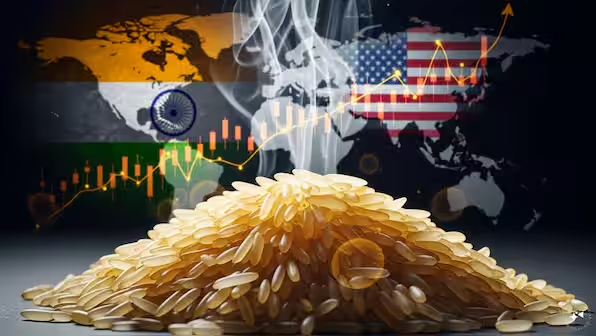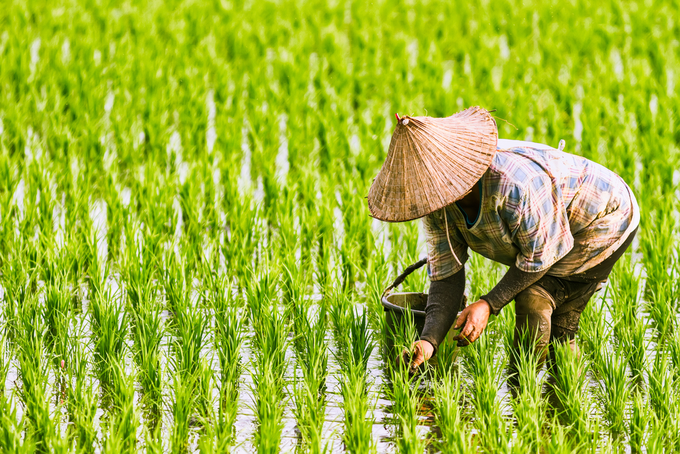Tags
Thai rice sector in crisis as yields fall, costs rise and export prices hit 15-year low

Experts warn Thailand’s rice industry is losing global competitiveness as yields decline, domestic prices collapse and decades of populist subsidies hinder farmers’ productivity.
Thailand’s long-running rice crisis has resurfaced, with new data showing that yields per rai continue to decline, production costs are rising, domestic paddy prices are collapsing, and export prices have fallen to their lowest level in more than 15 years. Analysts warn these are clear signs that the competitiveness of Thailand’s rice industry is steeply deteriorating in the global market.
Assoc Prof Somporn Isvilanonda, Senior Fellow at the Knowledge Network Institute of Thailand, said that over the past 14 years under four administrations, government rice policy has remained trapped in the same populist cycle — pledging schemes, income guarantees and direct subsidies such as “1,000 baht per rai”. These programmes have cost 1.2–1.3 trillion baht but have created a policy trap, discouraging farmers from upgrading technology, improving efficiency or adapting to global competition.
Meanwhile, key competitors such as Vietnam and India have rapidly upgraded seed quality and modernised production systems, enabling them to export better-quality rice at lower cost. Thailand, however, remains stuck in a subsidy-dependent model, now turning into a ticking time bomb for rural livelihoods and national food security.
Prices collapse while costs rise
Common white paddy that farmers sold for just over 10,000 baht per tonne last year has now dropped to below 8,000 baht. Freshly harvested paddy with high moisture sells for only 5,000-6,000 baht per tonne, far below production costs.
Thai farmers’ average production cost is 7,200–7,500 baht per tonne, compared with Vietnam: ~6,000 baht/tonne and India: ~5,000 baht/tonne. Meanwhile, Thailand’s yields remain the lowest in ASEAN at just 370–600 kg per rai, compared with Vietnam: ~800 kg/rai (over 1 tonne for some varieties) and India: 700–800 kg/rai.
For many Thai farmers, this means breaking even, losing money or earning only marginal profit— and only those who use high-yield varieties and advanced cost-saving techniques can survive. The result, Somporn warns, is that rice farming has become high-risk and increasingly fragile, trapping Thai households in middle-income stagnation.
Reform proposals: zoning, new varieties and low-carbon rice
Somporn says Thailand must adopt medium- and long-term reforms so farmers can survive.
He recommends:
- Agricultural zoning and mixed farming, allowing farmers to earn regular monthly income rather than relying solely on seasonal harvests.
- Government-funded R&D for high-yield rice varieties, such as the newly certified soft-texture strains RD113, RD117 and RD119, which can produce over 800 kg per rai.
- Scaling up seed production to meet farmer demand.
- Investing in low-carbon rice production, which aligns with global climate trends and will allow Thailand to command higher export prices in future.
- Re-skilling an ageing farmer population so they can use modern agricultural technologies effectively.
Somporn concluded that with the right policies, Thailand can reverse the decline — but without urgent reform, the country risks losing its position in the global rice market and pushing millions of rural households deeper into hardship.
Soft-texture rice: Vietnam surpasses Thailand
Assoc Prof Dr Aat Pisanwanich, an expert in international and ASEAN economics, stated that global consumers are increasingly shifting towards soft-texture rice, a trend that Thailand must urgently adapt to. He emphasised that Thailand needs to accelerate the development of new soft-texture rice varieties and expand seed production in order to meet farmers’ needs for high-yield, high-income strains.
According to the latest data from the Rice Department’s genetic database, Thailand has over 200 rice varieties, but only 10-20% (around 40 varieties) fall into the soft-texture category. In contrast, Vietnam has more than 1,000 rice varieties, of which 50% are soft-texture. These Vietnamese varieties deliver very high yields, averaging 960 kg to 1.3 tonnes per rai.
Aat argues that Thailand’s rice policy must change, noting that past policies — price interventions, pledging schemes, and incomplete varietal development — have not matched the needs of farmers or the export market. Research funding is limited, efforts to reduce production costs lack seriousness, and low-carbon rice initiatives remain largely superficial. As a result, Thailand’s rice production chain has become fragmented and inefficient.
By comparison, Vietnam does not intervene in rice prices and continuously develops new varieties, increasing rice research budgets every year. Its “3 Reductions, 3 Gains” policy (reducing fertiliser, pesticides and seed costs; increasing efficiency, yields and income) has delivered clear results. Vietnam has also implemented concrete low-carbon rice policies, supported by a unified production chain (“One Team”), enabling far more effective national coordination than in Thailand.
https://www.nationthailand.com/business/economy/40058216Published Date: November 16, 2025






